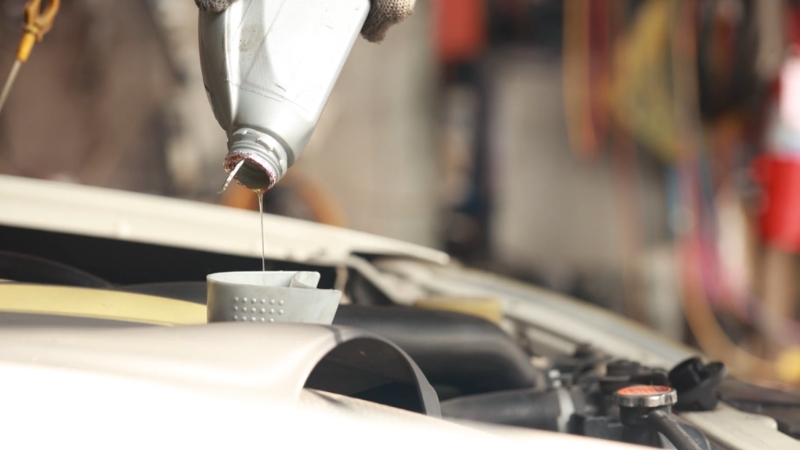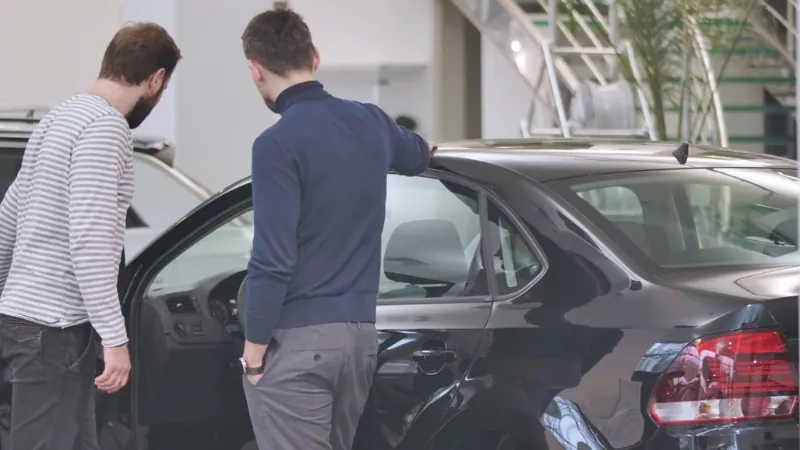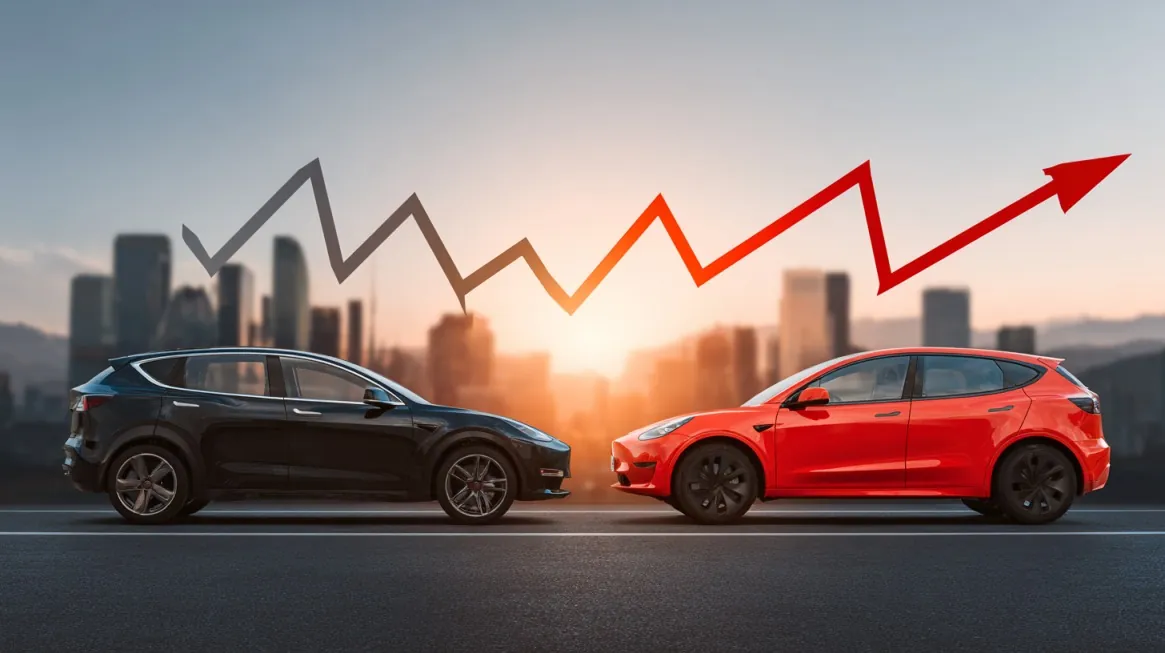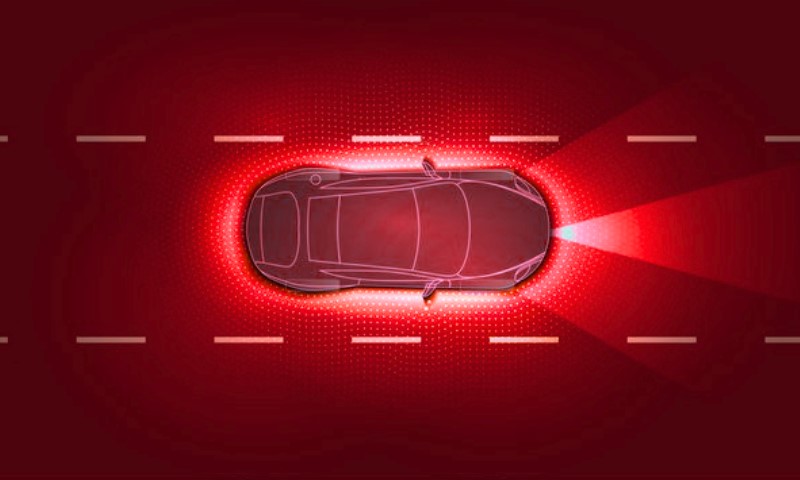
Share Post:
Cars built in 2025 are far removed from what rolled off assembly lines in the early 2000s. They are effectively digital guardians; dense networks of sensors, microprocessors, and predictive systems that react faster than any human can. Yet none of it happened overnight.
The transformation came through twenty years of relentless testing, regulation, and quiet technical iteration.
What started with a few airbags and ABS brakes evolved into full-blown safety ecosystems that now make surviving a crash far more likely, and avoiding one even more so.
Table of Contents
ToggleWhere Things Stood in the Early 2000s
Between 2000 and 2003, most family cars were mechanically straightforward. They had front airbags, three-point belts in nearly every seat, and crumple zones designed through physical crash tests rather than complex computer models.
Many mid-range vehicles offered antilock brakes, but few included the electronics that define safety today.
Common in 2000:
- Frontal airbags
- Antilock braking systems (ABS)
- Three-point seatbelts
- Basic side-impact beams and front crumple zones
Rare or absent in 2000:
- Electronic stability control (ESC)
- Side-curtain and torso airbags
- Rear-view cameras
- Automatic emergency braking (AEB)
- Lane keeping, blind-spot, or pedestrian-detection systems
At the same time, road deaths were staggering worldwide. The World Health Organization estimates around 1.19 million people still die every year in traffic collisions, a figure that has barely changed despite enormous technological progress.
For riders involved in serious crashes, consulting a motorcycle accident lawyer in Milwaukee can help them recover damages and navigate complex insurance claims.
But fatality rates per mile driven in wealthier countries have dropped steadily, thanks to vehicles that do more to protect their occupants, and now, to protect others, too.
Electronic Stability Control
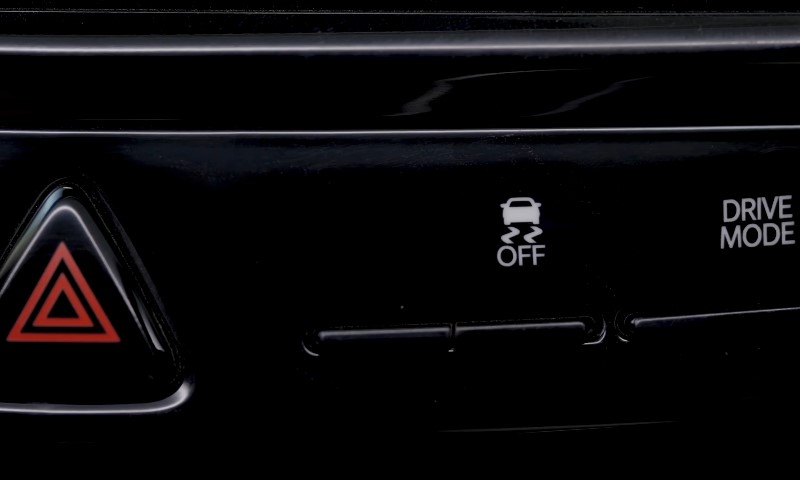
Electronic stability control marked the moment when car safety shifted from passive protection to active crash prevention. It became the backbone of modern vehicle stability and one of the most proven lifesavers ever introduced.
What ESC Does
Electronic stability control became the first major leap in crash prevention. The system monitors each wheel’s rotation and the car’s yaw angle.
If it senses a skid or fishtail, it automatically brakes individual wheels and cuts engine torque to bring the vehicle back into line. The benefit is profound because loss of control is one of the most lethal crash patterns.
Research from multiple countries found:
- 30–50 percent fewer fatal single-vehicle crashes in passenger cars
- 50–70 percent fewer in SUVs, which are more prone to rollovers
- Around one-third fewer multi-vehicle fatal crashes overall
How It Became Mandatory
Regulators turned ESC from an optional extra into a global standard.
- 2007: NHTSA issued a final rule, FMVSS No. 126, requiring ESC on all new light vehicles as part of a broader plan to cut rollovers.
- 2012: The rule fully took effect; all new light vehicles under 10,000 pounds had to include ESC.
- Europe and Japan followed with similar rules, and Euro NCAP made ESC essential for top safety ratings.
By the mid-2010s, ESC was no longer optional. It became the electronic foundation upon which every newer safety technology was built.
Crash Testing Gets Much Tougher
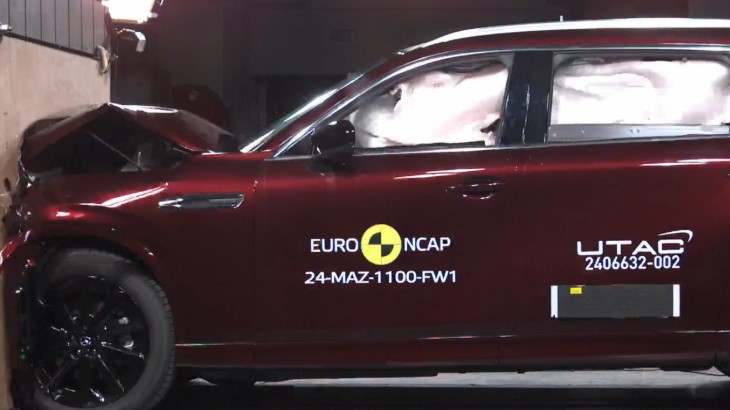
Crash testing matured from basic frontal impacts into sophisticated, multi-criteria evaluations that reshaped how cars were engineered.
Euro NCAP’s New Rating Scheme
The European New Car Assessment Programme (Euro NCAP), launched in 1997, began awarding stars for more than just frontal safety.
Key milestones:
- 2008: Whiplash testing for rear impacts.
- 2009: A new composite star rating that included adult, child, and pedestrian protection plus safety-assist performance.
- 2010s: Points awarded for AEB, ESC, and lane support systems.
The result was a measurable reduction in injuries. Real-world crash data from Sweden shows that cars scoring high in Euro NCAP pedestrian tests cut pedestrian and cyclist injury severity by up to 56 percent and severe head injuries by up to 90 percent.
IIHS Small Overlap Front Test
The Insurance Institute for Highway Safety (IIHS) in the U.S. changed frontal-crash design forever with its 2012 small overlap test. Instead of hitting the entire front, the test impacts only 25 percent of the front corner, replicating what happens when a driver clips a pole or the edge of an oncoming car.
Results spoke volumes: drivers of “good”-rated vehicles were about 12 percent less likely to die in frontal crashes than those in “poor”-rated ones.
Automakers reacted fast, strengthening front corners, optimizing airbags, and redesigning restraint systems to keep occupants aligned with airbags.
Crash testing had evolved from compliance paperwork into a high-stakes engineering contest, with real survival benefits attached.
Passive Safety (Airbags, Belts, and Structures)

Passive safety covers the systems that protect occupants once a crash is already happening. Airbags, seatbelts, and reinforced structures form the backbone of that defense, working together to absorb energy and keep people inside the cabin alive.
Airbag Evolution
By 2000, front airbags were standard. But as side impacts and rollovers became more visible in data, airbags expanded across the cabin.
New layers added since 2000:
- Side torso airbags in doors or seats
- Curtain airbags that protect heads during side impacts
- Advanced multi-stage inflators that adjust to crash severity
- Occupant-sensing systems to prevent injury to children and smaller adults
NHTSA estimates that frontal airbags alone have saved over 50,000 lives in the U.S. Side and curtain airbags have quietly added thousands more.
Seat and Whiplash Protection
Whiplash injuries, especially in low-speed rear-end crashes, caused huge economic and medical burdens. In 2008, Euro NCAP introduced rear-impact seat tests that rated both geometry and dynamic behavior.
Effective designs now feature taller, better-aligned head restraints and energy-absorbing seatbacks that limit neck motion.
Stronger Occupant Cells
To survive small-overlap, side, and oblique tests, manufacturers turned to high-strength steels and laser-welded structures. Energy channels are now computer-optimized to divert crash forces around the passenger cell.
The result is cabins that rarely deform, even under extreme impacts, while the outer shell absorbs the brunt of the energy.
Rear Visibility and Backup Cameras
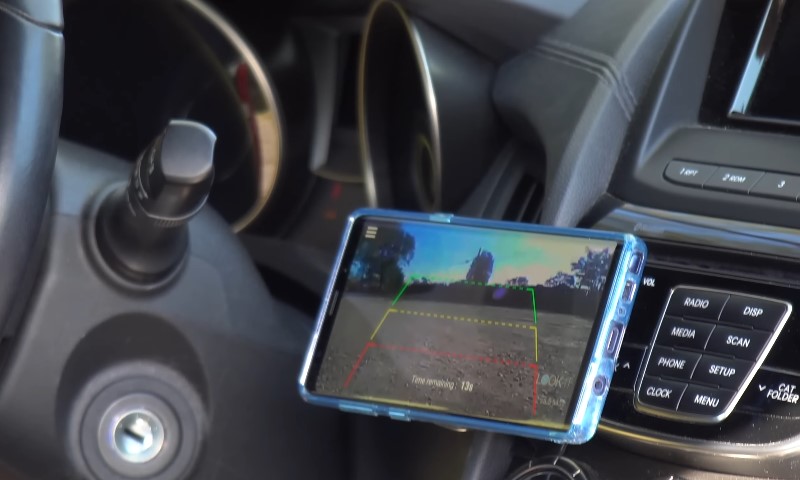
Backover incidents, often involving children, were an ongoing problem.
The U.S. took action with the Cameron Gulbransen Kids Transportation Safety Act of 2007, requiring NHTSA to develop rear-visibility standards.
- 2014: The final rule under FMVSS No. 111 was issued.
- May 2018: All new light vehicles under 10,000 pounds had to include backup cameras showing a 10-by-20-foot zone behind the vehicle.
Backup cameras soon combined with ultrasonic sensors and rear cross-traffic alerts, sharply reducing backover deaths and parking-lot collisions.
Crash Avoidance Technology Becomes Mainstream
The 2010s marked a shift from crash survival to crash prevention. Vehicles started thinking ahead.
Automatic Emergency Braking (AEB)
AEB uses radar or cameras to detect slower or stopped vehicles ahead and automatically applies brakes if the driver doesn’t react in time.
Key findings:
- Around 43 percent fewer rear-end crashes
- Roughly 45 percent fewer injury-causing rear-end crashes
- Strongest benefits at city speeds where low-speed AEB dominates
Policy milestones:
- 2016: Major automakers covering 99 percent of the U.S. market pledged to make AEB standard by 2022.
- 2024–2025: A new rule will require advanced AEB by 2029, capable of detecting pedestrians and operating up to about 62 mph. Regulators estimate 360 lives saved annually once the rule is in force.
As algorithms improved, AEB effectiveness rose beyond early predictions, reaching over 50 percent crash reduction in the newest datasets.
Lane Departure Warning and Lane Keeping
These systems monitor lane markings. A warning sounds if the car drifts; active systems gently nudge steering back.
Real-world studies by IIHS show meaningful reductions in sideswipe and run-off-road crashes, particularly on highways where fatigue or distraction lead to gradual drifting.
Blind-Spot Monitoring and Rear Cross-Traffic Alert
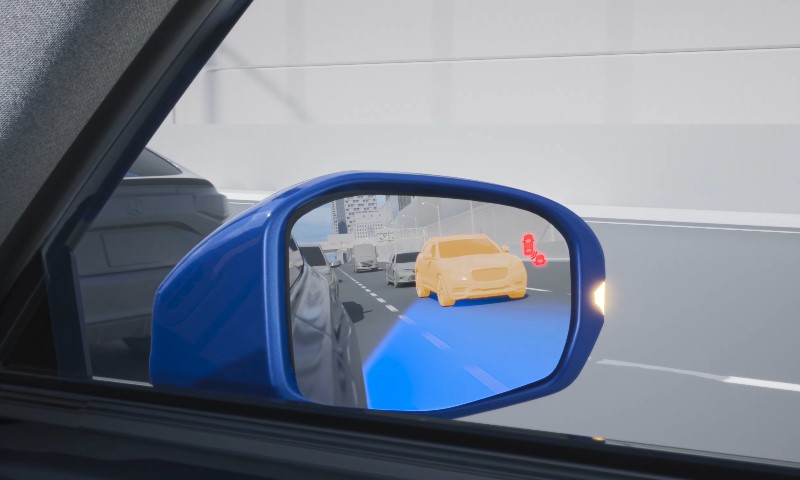
Blind-spot systems rely on radar sensors in the rear quarter panels. They have been linked to:
- 14 percent fewer lane-change crashes
- 23 percent fewer injury-causing lane-change crashes
Rear cross-traffic alerts add another layer by detecting vehicles approaching from the side while reversing, hugely useful in crowded parking lots.
Pedestrian and Cyclist Protection
Modern vehicle safety has expanded beyond protecting occupants to safeguarding those outside the car.
Pedestrian and cyclist protection now shapes how front ends are built and how sensors detect vulnerable road users in real time.
Pedestrian-Friendly Front Ends
For years, vehicles were designed mainly for occupant safety. That began changing in the late 2000s when regulators pushed for softer, more forgiving front-end designs.
Manufacturers added:
- Energy-absorbing bumpers and hoods
- Pop-up hoods that rise on impact to create space between the hood and engine components
- Redesigned windscreen bases to reduce head trauma
Euro NCAP and other global programs made pedestrian impact performance a scoring category, forcing even high-performance cars to adopt gentler front structures.
AEB for Pedestrians and Cyclists
Newer AEB systems detect pedestrians, cyclists, and even scooter users. They operate day and night, sometimes even in rain or fog, using fused radar-camera inputs.
Testing now includes child-sized dummies running into the road, cyclists crossing, and low-speed backing scenarios.
Studies across Europe and Japan report 20–56 percent reductions in pedestrian and cyclist injury severity.
Yet rising SUV front heights remain a growing concern, children are harder to see, and impacts happen at chest or head level rather than legs.
From ADAS to Autonomy
View this post on Instagram
A post shared by Autobot Academy | EV Learning Platform (@autobotacademy)
By the early 2020s, safety technology evolved into active driver assistance suites known collectively as ADAS (Advanced Driver Assistance Systems).
Common examples:
- Adaptive cruise control that maintains safe following distance
- Lane-centering systems for gentle highway steering assist
- Automatic high beams, driver monitoring cameras, and traffic-sign recognition
Fully automated vehicles remain limited to controlled environments, but early fleet data, such as 25 million autonomous miles logged by Waymo, suggests striking reductions in crash-related insurance claims.
The trend points toward increasingly supervised automation: Level 2 systems that still require human oversight but can manage speed and steering for long stretches.
Outcomes in Crash Statistics
Crash data over the past two decades shows how technology has steadily reduced fatalities. Modern vehicles not only protect better but also prevent more collisions, reshaping survival odds worldwide.
High-Income Country Trends
Fatality rates in developed nations continue to fall. In the United States:
- 2024: 39,345 traffic deaths, down 3.8 percent from 2023
- Fatality rate: roughly 20 per 100 million miles, below pandemic peaks but still higher than pre-2020 levels
Globally, road deaths hover around 1.19 million per year, as we mentioned earlier. Despite vehicle improvements, risks from speeding, distraction, and heavier SUVs remain.
Still, technology’s influence is clear: drivers and passengers today are dramatically more likely to survive a serious crash than they were two decades ago.
Key Milestones in One Timeline
| Period | Milestone | Effect on Safety Landscape |
|---|---|---|
| Early 2000s | ESC appears on premium models | First broad deployment of electronic skid control |
| 2007–2012 | FMVSS 126 mandates ESC | ESC becomes universal on light vehicles |
| 2008–2009 | Euro NCAP whiplash and new rating system | Safety ratings integrate pedestrian and assist features |
| 2007–2018 | Cameron Gulbransen Act mandates rear-visibility | Backup cameras become mandatory |
| 2012 onward | IIHS small-overlap test | Stronger front corners, fewer frontal fatalities |
| 2013–2015 | Euro NCAP AEB and pedestrian testing begins | AEB spreads across all segments |
| 2016–2022 | Voluntary automaker AEB commitment | Rapid AEB penetration |
| 2024–2029 | Advanced AEB mandate | AEB standardized across high speeds and pedestrian scenarios |
| 2024 onward | Proposed U.S. pedestrian head-protection rules | Aligns with European pedestrian design norms |
Technologies and Their Real Effects
| Technology | Crash Types Targeted | Approximate Real-World Effect |
|---|---|---|
| ESC | Loss of control, rollovers, head-ons | 30–50% fewer fatal single-vehicle crashes; 50–70% fewer for SUVs |
| AEB (low-speed + forward) | Rear-end crashes | ~43% fewer rear-end crashes; ~45% fewer rear-end injury crashes |
| Lane Departure / Lane Keeping | Road departures, sideswipes | Noticeable drop in single-vehicle injury crashes |
| Blind-Spot Monitoring | Lane-change crashes | ~14% fewer lane-change crashes; ~23% fewer injury lane-change crashes |
| Backup Cameras / Rear Cross-Traffic | Reversing, backovers | Sharp reduction in child backover fatalities |
| Pedestrian AEB + Soft Fronts | Pedestrian/cyclist impacts | 20–56% lower injury severity; major reduction in head trauma |
| Partial Automation | Mixed highway crashes | Early data shows lower claim rates vs. manually driven vehicles |
Where Vehicle Safety Stands Now
A 2025 model sold in most regulated markets includes a comprehensive set of standard protections:
- Electronic stability control
- Antilock brakes
- Front, side, and curtain airbags
- Strong occupant cell and engineered crumple zones
- Backup camera with cross-traffic detection
- Automatic emergency braking
- Lane-departure warning and lane keeping
- Blind-spot monitoring
- Structural and software-based pedestrian protection
Beyond that, over-the-air updates now enhance safety features after sale. Connected vehicles can gain new AEB or lane-assist algorithms via software pushes, closing the gap between model years faster than ever before.
Still, technology alone is not enough. Rising distraction, aggressive driving, and ever-larger vehicles continue to erode some of the safety gains.
Yet the long-term trend remains positive: more people walk away from severe crashes, and fewer die from common collision types than at any point in automotive history.
Summary
From simple airbags to predictive braking and semi-autonomous control, the story of vehicle safety since the early 2000s is one of quiet revolutions.
Engineers, regulators, and testers have collectively changed what survival looks like on the road. Cars that once relied on passive defenses now anticipate danger, warn the driver, or intervene on their own.
Each milestone, ESC mandates, tougher crash tests, and AEB adoption, represents a step toward making human error less fatal. The next chapter will likely focus on fully integrated AI safety layers, pedestrian-aware autonomy, and global standardization.
But even now, the results are measurable: driving today is safer, smarter, and far more forgiving than it was a generation ago.
Related Posts:
- California Window Tint Laws in 2025 Explained - Is…
- Should You Really Buy a Car Online? Pros & Cons Explained
- How Weather Conditions Affect Electric Vehicle…
- New Federal Laws Targeting Self-Driving Vehicle…
- Toyota Camry Key Won’t Turn - How to Resolve This Problem?
- 2025 Dodge Charger - Full Review, Pricing Details,…



